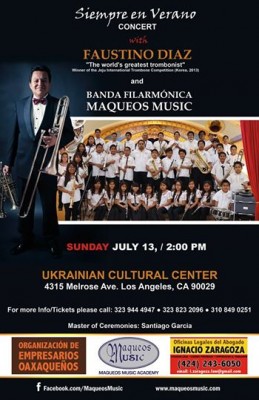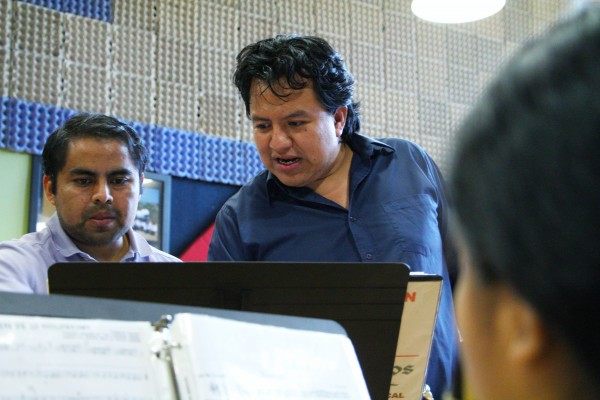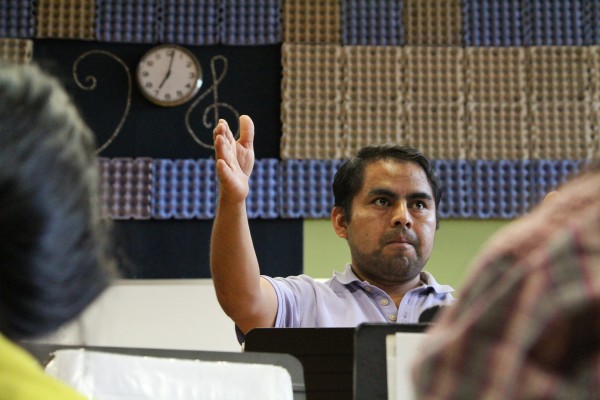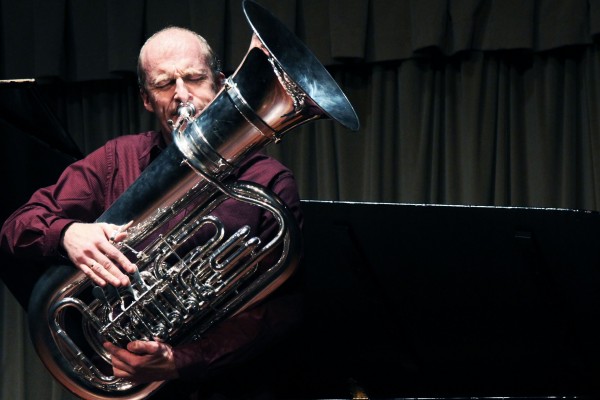Tag Archives: classical music
The proper use of `awesome’
Filed under Culture
Classical music in Tijuana’s slums
Yesterday, I toured the Centro de Artes Musicales in Tijuana, a nonprofit that has set up youth orchestras in several of the worst slum neighborhoods of this sprawling town.
The CAM formed four years ago and is modeled on El Sistema, Venezuela’s youth orchestra network, which produced LA Phil director Gustavo Dudamel.
 Kids whose parents are swap meet shoe vendors and security guards are playing in these orchestras in shantytown neighborhoods, including some of Tijuana’s worst. Caminos Verdes, which has a string section, spawned Teodoro Garcia Simental, aka El Teo, one of the city’s most insane narcos, which is saying a lot. There’s a choir in the north-end neighborhood where most of the kids are children of prostitutes in the Calle Coahuilas redlight district.
Kids whose parents are swap meet shoe vendors and security guards are playing in these orchestras in shantytown neighborhoods, including some of Tijuana’s worst. Caminos Verdes, which has a string section, spawned Teodoro Garcia Simental, aka El Teo, one of the city’s most insane narcos, which is saying a lot. There’s a choir in the north-end neighborhood where most of the kids are children of prostitutes in the Calle Coahuilas redlight district.
This is the next step in the evolution of classical music in Tijuana.
The story of how classical music came to Tijuana, a town that mostly used music as the soundtrack to a striptease, is fascinating.
I wrote about this in my second book, Antonio’s Gun and Delfino’s Dream.
In 1991, an astronomer and classical music fan had recently moved from Mexico City to Tijuana, where he found no classical music of any kind. But he had a Mexican friend in studying conducting in Moscow.
Together, they arranged to import an entire Russian chamber orchestra – 25 highly trained classical musicians, who left Moscow in the dead of January and arrived in sunsplashed TJ. They stayed, taught music and formed the Orquesta de Baja California and a music conservatory.
Like everything in Tijuana, classical music came from elsewhere. The musicians’ main support came from Tijuana’s middle classes, which are relatively large for Mexico.
From there ushered an entire movement in classical music and opera, which to me felt very underground, very punk rock – as these folks operated with an entirely DIY ethos, bracing themselves against the headwinds of the city’s dominant musical forces: the chintzy disco, techno and heavy metal that boomed from Tijuana’s many bars.
Now the CAM, 20 years later, is taking classical music to the rough neighborhoods that began as squatter settlements in so many parts of Tijuana, and some of which only recently got paved streets.
The connection to Eastern Europe, meanwhile, didn’t stop with those Russians.
Musicians from the region have continued to flow across the globe to Tijuana. Of seven female musicians in the orchestra, two are from the Ukraine, one from Armenia, and one is from Cuba, too.
Just love these stories!
Faustino Diaz: Trombone master from Oaxaca in L.A.
https://soundcloud.com/samquinones/faustino-diaz-entrevista-en-espanol
Faustino Diaz, the Oaxacan trombone master, returns to Los Angeles this weekend for a concert at the Ukrainian Hall, 4315 Melrose Ave., this Sunday at 2 p.m.
Diaz thrilled Mexico last year when he won the International Trombone Competition in South Korea.
A few days later he visited the Pico-Union District and the music school run by director Estanislao Maqueos, who has used his school to organize Oaxacan youth orchestras.
There, I had the chance to sit down and talk with him about his life, and having to venture out into the world to find his music like a migrant finds a future.
The interview is above and in Spanish.
Check out the concert. Should be good.
Filed under California, Culture, Mexico, Migrants, Southern California
The World’s Best Trombonist … from Oaxaca to Pico-Union
The world’s greatest trombonist appeared in a small music studio in the Pico-Union district of Los Angeles this week.
Faustino Diaz, from Oaxaca, won the prestigious Jeju international trombone competition in Korea earlier this month.
Three days later he was back in his village of San Lorenzo Cacaotepec (pop. 7300), playing danzones with the village band he grew up in, directed by his father.
Diaz has a beautiful story, which reminded me of so many Oaxacan immigrants in LA.
In his village, music possibilities were limited. So he left for Mexico City. There he improved, but as time passed he found he was still not the musician he thought he could be, even as he played in the philharmonic of the National Autonomous University (UNAM).
So a few years ago, he left the plum job with the UNAM philharmonic, gambled everything and moved to Rotterdam, Holland to study with Jorgen van Rijen, who remade his sound, tenderized his musical sensibilities that had been stunted by limited exposure to the world’s music and best musicians off in Mexico.
Showing the kind of gumption that has characterized so many immigrants, including his Oaxacan paisanos here in LA, he became a world-class musician himself.
He came in second in the trombone competition a year ago in Italy. But this year, seasoned and ready for his moment, Diaz beat a French and a Japanese competitor, and 46 others.
With hallucinogenic jet lag, he returned to a hero’s welcome back in Oaxaca, with a parade through his village, hordes of journalists to ask him how he did it, and the banda in which he first learned to play — trumpet initially, then trombone — ready to receive him.
Famed Oaxacan painter Francisco Toledo came to town to congratulate him.
Next day, he flew to Mexico City and was mobbed in a press conference there as well.
This week, he’s in the music studios of Estanislao Maqueos , the premier Oaxacan band instructor in Los Angeles. (2142 W. Washington Blvd., just east of Western Avenue)
Diaz plays with an orchestra of children born to Oaxacan parents, and trained by Maqueos, tonight (Thursday) at the Mexican Consulate on 6th Street near MacArthur Park. 7 p.m.
Meanwhile, a few previous posts from True Tales: A Reporters’ Blog:
Filed under California, Culture, Los Angeles, Mexico, Migrants, Uncategorized
PODCAST: Oystein Baadsvik and Tuba Civil Rights
Oystein Baadsvik is the only tuba player in the world to make his living entirely from solo performances, his own CDs and master classes.
For the last 20 years, he has been expanding the possibilities of the world’s largest brass instrument, and reshaping the way it’s viewed by the public, as well as by the musicians who play it.
(Listen to an interview with Oystein Baadsvik, tuba virtuoso and creative spirit.)
A Norwegian by birth, Baadsvik, 46, now spends 200 days a year traveling, preaching tuba creativity and the limitlessness of an instrument born more than a century ago into accompanist captivity.
I met Baadsvik before a master class he was to give one night at the University of Southern California — itself a center of tuba effervescence. (It’s where the late Tommy Johnson taught and turned out dozens of professional tuba players; and it’s where Jim Self now teaches and continues to educate the tubists of tomorrow.)
Close to a hundred students filled the class later that evening — most of them tuba players.
During our interview, we spoke about Baadsvik’s life as a tuba soloist, the limitations other non-players have imposed on the tuba, how tuba players have subconsciously accepted these limitations, and whether a tuba civil rights movement has formed to lead the instrument out from the back of the band.
“Playing a tuba is always crossing borders, doing stuff that hasn’t been done before,” he said.
Anyway, hope you enjoy an interview with a creative spirit.
The pieces on the podcast are:
 First, “Dancing with a Blue Ribbon” from his new CD, Ferry Tales.
First, “Dancing with a Blue Ribbon” from his new CD, Ferry Tales.
“Winter” from Vivaldi’s “Four Seasons” from his first CD, Tuba Carnival.
Finally, “Fnugg,” also from Tuba Carnival.




